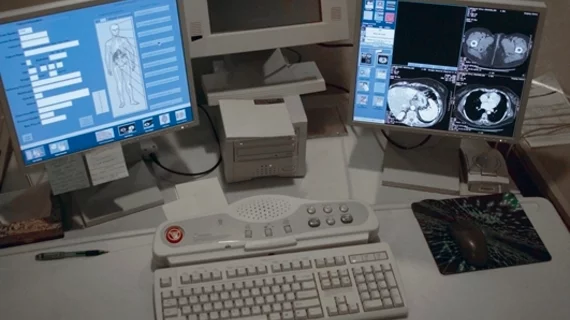Could this change how radiology residents record their clinical output?
Radiology residents around the world typically record experiential learning (EL) in a clinical logbook, but according to a new study published in the Journal of Digital Imaging, modern PACS and RIS technology could very well be used to build the EL portfolios of the future.
“The PACS/RIS captures an individual’s complete reporting portfolio, including examination descriptors, patient demographics, clinical details, radiological findings, the supervising radiologist, and the procedure date and time,” wrote authors Abraham Gerhardus Wilhelmus Greyling and Richard Denys Pitcher of Stellenbosch University and Tygerberg Academic Hospital in Cape Town, South Africa. “The PACS/RIS thus represents a comprehensive, objective, digital repository of residency outputs, providing unique insights into the extent of clinical exposure. Furthermore, these data can be extracted on a simple spreadsheet, facilitating easy analysis and stratification by modality or time period.”
The authors conducted a PACS/RIS-based analysis of the clinical outputs of 15 radiology residents from the same institution. Overall, they found their research to be a success. It may have just been based at a single institution, they wrote, but it “has the potential to inform discourses on specialty training” at both a national and an international level.
“This first PACS/RIS-based documentation of the comprehensive clinical outputs of any radiology training program provides important baseline educational data,” Greyling and Pitcher wrote. “It highlights the potential pivotal role of the modern PACS/RIS in facilitating a broad range of educational analyses in postgraduate radiology training.”
The average total clinical output was more than 8,200 cases. CT exams and x-rays were the most common modalities, accounting for nearly 70 percent of the residents’ total clinical work. Residents also gained experience with fluoroscopy, mammography, MR and interventional radiology procedures. In addition, the resident with the highest total clinical output performed 67 percent more cases than the lowest, showing the discrepancies that can exist between one resident and the next.
The authors also noted that residents with “prior radiology experience” were more successful at their first exam attempt, though they did average lower overall outputs.
“This finding is intuitive, since one would expect candidates with accrued time and clinical outputs in the discipline to be better examination candidates,” the authors wrote. “However, the finding also makes an important contribution to current discourses on the optimal duration of specialist training in the discipline.”

